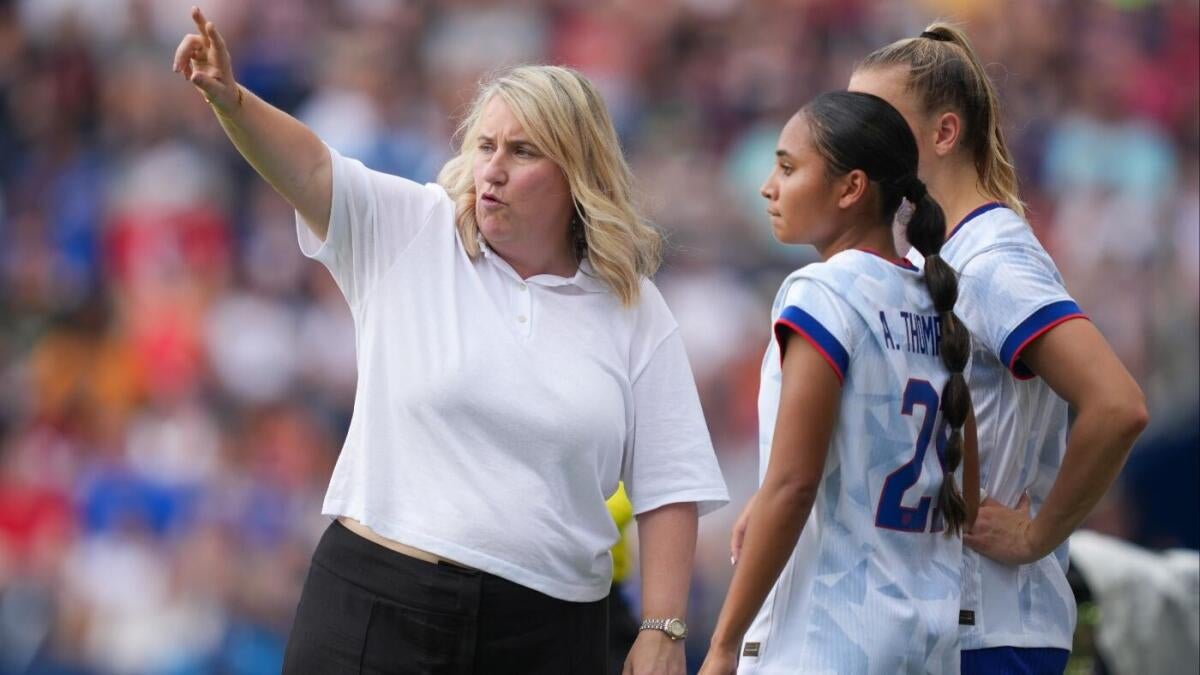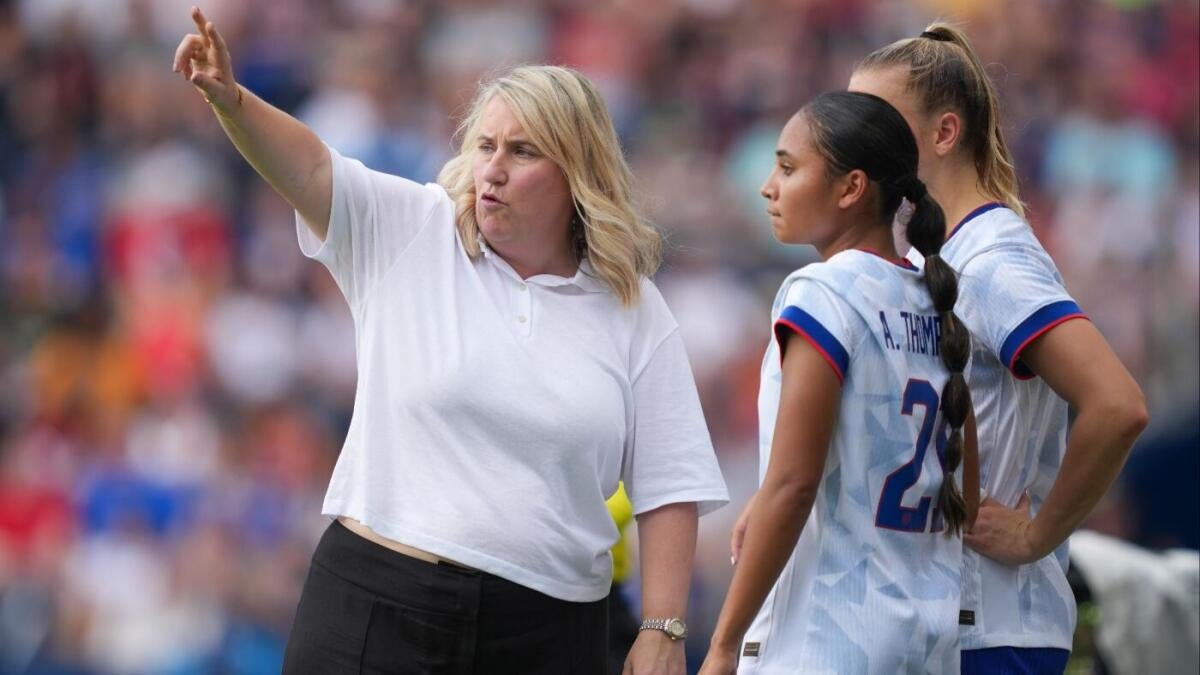The rivalry between the United States Women’s National Team (USWNT) and Canada is one of the most compelling in women’s soccer. More than just geographical proximity fuels this contest; it’s a battle of contrasting styles, fierce national pride, and a relentless pursuit of dominance on the world stage. This report delves into the intricacies of this rivalry, examining recent encounters, key players, tactical nuances, and the broader implications for both teams.
A Storied History: More Than Just Neighbors
The USWNT and Canada have a long and rich history, facing each other 66 times with the USWNT holding a dominant 53-4-9 record. These matches often carry significant weight, ranging from friendly tune-ups to crucial tournament clashes with Olympic spots on the line. The familiarity between the two sides breeds intense competition, with each team intimately aware of the other’s strengths and weaknesses. The games are marked by passion, tactical adjustments, and a constant striving to outmaneuver their North American rivals.
The rivalry dates back to the early days of women’s international soccer, with both teams playing pivotal roles in the growth of the sport. The USWNT’s dominance in the early years set the stage for a competitive dynamic that has only intensified over time. Canada, meanwhile, has evolved into a formidable opponent, capable of challenging the USWNT on multiple fronts. The two teams have met in various tournaments, including the FIFA Women’s World Cup, the Olympic Games, and the CONCACAF Women’s Championship, each encounter adding another layer to their storied rivalry.
Recent Encounters: A Glimpse into the Present
Recent matches offer a snapshot of the current state of the rivalry. The USWNT has generally maintained its upper hand, securing victories in crucial encounters like the SheBelieves Cup Final and the CONCACAF Gold Cup Semifinal. However, Canada has proven to be a resilient opponent, often pushing the USWNT to its limits, as seen in their closely contested quarterfinal battle against Costa Rica in the Gold Cup, where they eked out a narrow one-goal victory. These games underscore the narrowing gap between the two teams and the increasing competitiveness of the rivalry.
The USWNT’s victory in the SheBelieves Cup Final, for example, showcased their ability to perform under pressure. The match was a testament to their tactical discipline and individual brilliance, with players like Alyssa Thompson and Sophia Smith delivering standout performances. On the other hand, Canada’s resilience in the Gold Cup quarterfinal highlighted their growing confidence and tactical acumen. The match against Costa Rica was a nail-biting affair, with Canada’s defensive solidity and counterattacking prowess coming to the fore.
Allstate Continental Clasico: A New Chapter
The introduction of the Allstate Continental Clásico adds another layer of intrigue to the USWNT-Canada rivalry. This event provides a platform for these teams to showcase their talents, experiment with new tactics, and further intensify the competitive spirit. It’s not just about winning; it’s about sending a message and asserting dominance in the North American soccer landscape.
The Allstate Continental Clásico is more than just a friendly; it’s a statement match that brings together the best of North American women’s soccer. The event has quickly become a highlight of the international calendar, drawing significant attention from fans and media alike. For the USWNT and Canada, it’s an opportunity to test their mettle against a familiar yet formidable opponent, providing valuable insights ahead of major tournaments.
Key Players: The Architects of Success
Several key players often dictate the flow and outcome of these high-stakes matches. For the USWNT, players like Alyssa Thompson, who has shined in recent outings, are crucial in injecting pace and creativity into the attack. The midfield presence of veterans like Horan, coupled with the defensive solidity of Girma and Sonnett, provides a strong spine for the team.
On the Canadian side, Christine Sinclair, a legend of the game, remains a pivotal figure, despite the team going through a transition. Her experience and leadership are invaluable, while emerging talents like Jessie Fleming bring dynamism and skill to the Canadian squad. The battles between these key players often define the narrative of the match.
Alyssa Thompson, in particular, has emerged as a rising star for the USWNT. Her pace, technical ability, and eye for goal make her a constant threat to any defense. Sophia Smith, another key player, has been instrumental in the USWNT’s recent successes, combining creativity with clinical finishing. For Canada, Christine Sinclair’s leadership and goal-scoring prowess continue to be a driving force, while Jessie Fleming’s versatility and vision add a new dimension to their attack.
Tactical Battles: A Chess Match on the Pitch
The tactical approaches of the USWNT and Canada often reflect their contrasting styles. The USWNT, under the guidance of Emma Hayes, is in a period of evolution. Hayes is known for her tactical acumen and player evaluation skills, often experimenting with different lineups and formations to find the optimal balance. The USWNT aims for a dynamic attacking game, leveraging the pace of their forwards and the creativity of their midfielders.
Canada, on the other hand, often adopts a more pragmatic approach, focusing on defensive solidity and exploiting opportunities on the counterattack. Their ability to remain organized and disciplined at the back makes them a difficult team to break down. The tactical chess match between the two coaches adds another layer of fascination to these encounters.
Hayes’ influence on the USWNT is already evident in their recent performances. Her emphasis on possession-based play and quick passing has added a new dimension to the team’s attacking threat. The USWNT’s ability to adapt to different game situations, whether it’s maintaining possession or launching rapid counterattacks, reflects Hayes’ tactical flexibility. Canada, meanwhile, has honed their defensive organization and counterattacking prowess, making them a well-rounded and resilient opponent.
Emma Hayes Era: A New Dawn for the USWNT
The appointment of Emma Hayes as the head coach of the USWNT marks a significant turning point. Hayes brings a wealth of experience and a proven track record of success, having transformed Chelsea into a dominant force in English women’s soccer. Her arrival has sparked a sense of optimism and anticipation among USWNT fans, who are eager to see how she shapes the team’s future.
Player Evaluation and Experimentation
Hayes has emphasized the importance of player evaluation and experimentation, utilizing recent friendlies to assess the strengths and weaknesses of her squad. She has demonstrated a willingness to give opportunities to younger players, as seen in the call-ups for Gisele Thompson. This approach reflects Hayes’ commitment to building a team for the future, while also maximizing the potential of the current roster.
Hayes’ player evaluation process is thorough and meticulous. She has a keen eye for talent and is not afraid to give young players a chance to prove themselves. The call-up of Gisele Thompson, for example, highlights Hayes’ belief in nurturing young talent and integrating them into the senior team. This approach not only benefits the individual players but also strengthens the overall depth and competitiveness of the USWNT.
Impact on Tactical Approach
Hayes’ tactical philosophy is likely to influence the USWNT’s style of play. She favors a possession-based approach, with an emphasis on quick passing and movement. Her teams are known for their tactical flexibility, capable of adapting to different opponents and game situations. It will be intriguing to see how Hayes integrates her ideas into the USWNT and how the team evolves under her leadership.
Hayes’ tactical flexibility is one of her greatest strengths. She is adept at reading the game and making in-game adjustments to counter the opposition’s strategies. This adaptability has been a hallmark of her coaching career and is likely to be a key factor in the USWNT’s success under her leadership. The team’s ability to switch between possession-based play and rapid counterattacks will make them a formidable opponent for any team, including Canada.
The Road Ahead: World Cup and Beyond
The USWNT-Canada rivalry extends beyond individual matches, shaping the broader landscape of women’s soccer. Both teams have aspirations of competing for major titles, including the World Cup and the Olympic Games. Their encounters serve as valuable preparation for these tournaments, providing a platform to test their strategies, refine their tactics, and build team cohesion.
Olympic Qualification
With a spot at the 2024 Summer Olympics on the line in past encounters, the stakes are always high when these two teams clash. The rivalry adds an extra layer of intensity to these matches. The quest for Olympic glory fuels the competitive spirit and underscores the importance of each encounter.
The Olympic Games are a pinnacle event for both the USWNT and Canada. The rivalry between the two teams often plays a crucial role in their qualification campaigns. The intensity and competitiveness of their matches serve as a litmus test for both teams, helping them gauge their readiness for the global stage. The quest for Olympic glory is a driving force for both teams, and their encounters are often a prelude to their performances in major tournaments.
Impact on Women’s Soccer
The USWNT and Canada are both influential forces in women’s soccer, inspiring young players and driving the growth of the game. Their rivalry helps to raise the profile of women’s soccer, attracting fans and sponsors alike. The matches between these two teams are not just sporting events; they are celebrations of the skill, passion, and dedication of female athletes.
The impact of the USWNT-Canada rivalry extends beyond the pitch. It serves as a catalyst for the growth and development of women’s soccer, inspiring young players and attracting new fans to the sport. The matches between these two teams are often high-profile events that draw significant media attention, helping to raise the profile of women’s soccer globally. The rivalry is a testament to the skill, passion, and dedication of female athletes, and it continues to inspire the next generation of players.
Conclusion: A Rivalry Set to Endure
The USWNT-Canada rivalry is a captivating saga filled with memorable moments, intense competition, and a shared pursuit of excellence. As both teams continue to evolve and strive for greatness, their encounters will undoubtedly remain a highlight of the women’s soccer calendar. The blend of tactical intrigue, individual brilliance, and fierce national pride ensures that this rivalry will endure for years to come, captivating fans and shaping the future of the sport. The appointment of Emma Hayes adds a new dimension to this rivalry, promising an era of tactical innovation and exciting matches. As the two teams continue to clash on the pitch, the world will be watching, eager to witness the next chapter in this storied rivalry.












